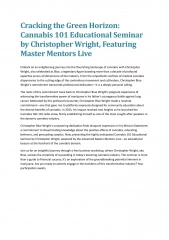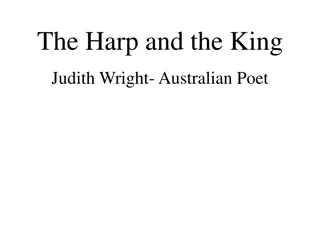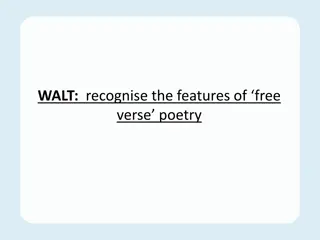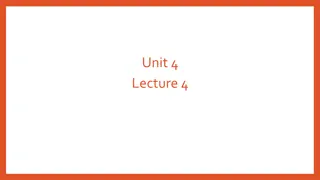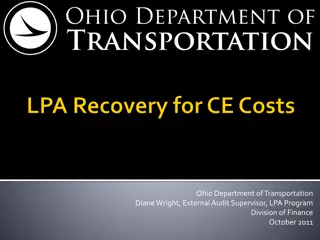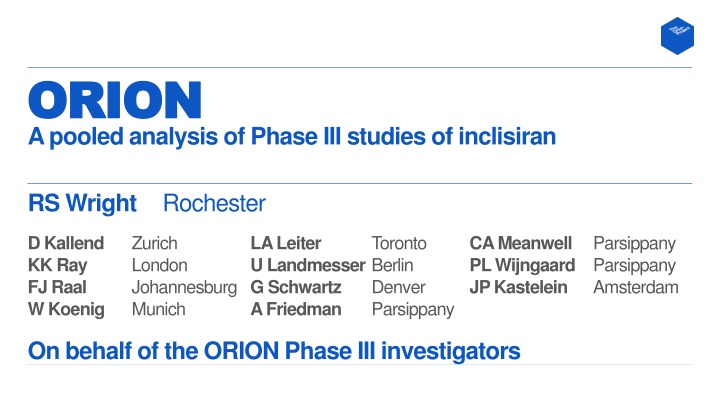
Harnessing RNAi for Improved LDL-C Lowering in Phase III Studies
In the ORION Phase III studies, inclisiran was evaluated as a promising intervention for lowering LDL-C levels in patients with ASCVD and FH. By harnessing the natural RNA interference process, inclisiran showed efficacy and safety comparable to standard treatments. Lifestyle modifications, statins, and adjunctive therapies play crucial roles in managing cardiovascular risk factors. Key challenges persist despite aggressive treatment approaches, highlighting the importance of innovative solutions like inclisiran. Check out the pooled analysis findings and study designs to learn more.
Download Presentation

Please find below an Image/Link to download the presentation.
The content on the website is provided AS IS for your information and personal use only. It may not be sold, licensed, or shared on other websites without obtaining consent from the author. If you encounter any issues during the download, it is possible that the publisher has removed the file from their server.
You are allowed to download the files provided on this website for personal or commercial use, subject to the condition that they are used lawfully. All files are the property of their respective owners.
The content on the website is provided AS IS for your information and personal use only. It may not be sold, licensed, or shared on other websites without obtaining consent from the author.
E N D
Presentation Transcript
ORION ORION A pooled analysis of Phase III studies of inclisiran Rochester RS Wright Zurich London Johannesburg G Schwartz Munich Toronto Parsippany Parsippany Amsterdam D Kallend KK Ray FJ Raal W Koenig LA Leiter U Landmesser Berlin CA Meanwell PL Wijngaard JP Kastelein Denver Parsippany A Friedman On behalf of the ORION Phase III investigators 1
Disclosures Please see ACC Program 2
ORION Phase III pooled analysis: Background and rationale Challenges remain with regard to LDL-C lowering LDL-C lowering is the most effective intervention to change the course of ASCVD and FH yet substantial residual risk remains despite aggressive treatment with statins and other agents1. Lifestyle modification and statin treatment are foundational for ASCVD prevention2,3 Ezetimibe and monoclonal antibodies to PCSK9 are adjunctive strategies to reduce LDL- C and clinical events by multiple treatment guidelines4-6 1. Benjamin et al. Circulation 2019;139:e56-e528. 2. Grundy et al. Circulation 2019;139:e1082-e143. 3. Mach F et al. European Heart Journal 2019 doi:10.1093/eurheartj/ehz455 4. Cannon et al. N Engl J Med 2015;372:2387-97. 5. Sabatine et al. N Engl J Med 2017;376:1713-22. 6. Schwartz et al. N Engl J Med 2018;379:2097-107 3
ORION Phase III pooled analysis: Background and rationale Harnessing the natural process of RNAi Inclisiran Small interfering double-stranded RNA1 Harnesses the natural process of RNAi Nucleotides modified for durability and low immunogenicity Distributed to liver due to GalNAc conjugation Inhibits production of PCSK9 in hepatocytes Fitzgerald et al. N Engl J Med. 2017;376:41-51. 44
ORION Phase III pooled analysis Online e-publications of ESC and AHA Individual Study presentations 55 1. DOI: 10.1056/NEJMoa1912387 2. DOI: 10.1056/NEJMoa1913805
ORION Phase III pooled analysis Purpose To assess efficacy and safety of inclisiran 284 mg compared to placebo in a pooled analysis of all Phase III trials Inclisiran 284 mg is equivalent to Inclisiran sodium 300 mg. 6
ORION Phase III pooled analysis: Common study design 18 months treatment & observation Randomized 1:1 inclisiran 284 mg vs. placebo with maximally tolerated statins 77
ORION Phase III pooled analysis: Entry criteria General study inclusions and exclusions Inclusion criteria Exclusion criteria Age 18 years Prior or planned use of PCSK9 mAbs Statin treatment MACE within 3 months of randomization NYHA class IV HF or LVEF 25% Maximally tolerated doses, or documented intolerance Ezetimibe allowed Uncontrolled severe hypertension Informed consent required Severe concomitant non CV disease Prior/planned other investigational drug Fasting TG >400 mg/mL (4.52mmol/L) 88
ORION Phase III pooled analysis: Entry criteria Specific study inclusions ORION-9 ORION-10 ORION-11 HeFH1 ASCVD (CHD, CVD, PAD) ASCVD (CHD, CVD, PAD) Stable on a low-fat diet ASCVD risk equivalents Type 2 diabetes 10-year risk 20% HeFH1 LDL-C 70 mg/dL LDL-C 100 mg/dL LDL-C 70 mg/dL / 100 mg/dL in risk-equivalent 1. Diagnosed by genetic testing and/or Simon Broome criteria 99
ORION Phase III pooled analysis: Objectives To confirm inclisiran efficacy and safety over 18 months Study endpoints 1. Effectiveness Primary Percent LDL-C change vs. placebo At day 510 Average over days 90 540 Secondary LDL-C change over time Changes in PCSK9 and other lipids 2. Safety and tolerability Treatment emergent adverse events Laboratory parameters 3. Exploratory Cardiovascular events1 1. MedDRA-defined cardiovascular non-adjudicated terms including cardiac death, and any signs or symptoms of cardiac arrest, non-fatal MI and/or stroke 10 10
ORION Phase III pooled analysis: Statistical plan Large sample enrolled to enable reliable inference Pre-specified pooling strategy and methods - agreed with regulatory agencies Primary endpoints Family-wise type I error rate controlled using a sequential testing procedure Sensitivity analysis for primary efficacy endpoints Pre-specified imputation and analysis methods used to account for missing data Safety observation of ~7000 inclisiran injections and >2700 years patient exposure 11
ORION Phase III pooled analysis: Patient disposition High proportion of patients completed the studies Abbreviated consort diagram Died Withdrew consent Lost to follow-up Adverse event PCSK9 mAb initiation Other 27 55 29 5 10 6 ITT Safety 1822 1827 Completed 92.8% Placebo Screened 5327 Randomized 3660 ITT Safety 1833 1833 Completed 94.3% Inclisiran Screen failures Entry criteria miss Withdrew consent Other 1667 1485 148 34 Died Withdrew consent Lost to follow-up Adverse event PCSK9 mAb initiation Other 27 37 17 12 0 12 Safety population comprises any subject given any study medication 12 12
ORION Phase III pooled analysis: Patients Representative high risk cohort balanced by randomization Patient characteristic ITT population1 Age median (range) - years United States Male gender Diabetes Lipid management treatment Statins Of which high intensity statins given Ezetimibe2 Baseline LDL-C mg/dL (SD) Placebo N = 1827 65 (21-89) 812 (44%) 1244 (68%) 631 (35%) 1737 (95%) 1675 (92%) 1345 (74%) 246 (14%) 111 (44) Inclisiran N = 1833 65 (20-90) 814 (44%) 1226 (67%) 687 (38%) 1761 (96%) 1686 (92%) 1356 (74%) 231 (13%) 112 (45) 1. All patients who were randomized, analyzed according to randomization 2. Does not include statin-ezetimibe combination tablets 13
ORION Phase III pooled analysis Efficacy results Efficacy results 14
ORION Phase III pooled analysis: Efficacy Highly significant lowering of LDL-C relative to placebo Treatment group N (ITT1) Percent change LDL-C Mean at day 510 Observed Imputed2 Time-averaged day 90 - 540 Observed Imputed3 1827 + 4 + 6 + 4 + 5 Placebo 1833 - 51 - 45 - 48 - 45 Inclisiran Difference (1o endpoint) - 55 - 51 - 52 - 51 P-value <0.0001 <0.0001 1. All patients who were randomized, analyzed according to randomization 2: Multiple imputation washout model 3: Control-based pattern mixed model 15
ORION Phase III pooled analysis: Efficacy Durable and potent with consistent effect over 18 months Percent change in LDL-C over time observed values in ITT patients Mean % change from baseline 0 Time-averaged 52% 55% -20 -40 -60 -80 Inclisiran Placebo -100 0 3 6 9 12 15 18 Months P-value for placebo inclisiran comparison at each time point <0.0001 1. All 95% confidence intervals are less than 2% and therefore are not visible outside data points 16
ORION Phase III pooled analysis: Efficacy Likelihood of achieving specific LDL-C thresholds LDL-C threshold <100 mg/dL 100 patients on statin 51 100 patients on statin + inclisiran Odds ratio 8 89 <70 mg/dL 19 14 2 76 <50 mg/dL 54 58 16 0.3 <25 mg/dL 60 Likelihood of reaching LDL-C thresholds at Day 510 among patients with available data 17
ORION Phase III pooled analysis: Efficacy Effects on other lipid parameters Percent Change from baseline to day 510 ITT population1 Imputed values2 Placebo Inclisiran p-value N = 1827 N = 1833 Mean % PCSK9 + 14.8 - 68.2 <0.0001 -83% -32% Mean % Total cholesterol + 2.9 - 29.5 <0.0001 -46% Mean % Non HDL-C + 3.6 - 42.8 <0.0001 Mean % ApoB + 1.7 - 40.2 <0.0001 -42% Median % -20% Lp (a) (day 540) + 0.7 - 19.5 <0.00013 1. All patients who were randomized 2: Imputed using a mixed model for repeated measures 3: Non-parametric test; not imputed 18
ORION Phase III pooled analysis: Efficacy Robust LDL-C across pre-specified sub-populations Subgroup Inclisiran Placebo LS Mean Percent Difference in LDL-C N N Overall Overall 1833 1827 -54.1 Sex Male Female 1226 607 1244 583 -53.8 -54.8 Age <65 yr or 65 yr <65 yr 65 yr Age <75 yr or 75 yr <75 yr 75 yr Body mass index 29.7 >29.7 Race White Black Other Baseline statin treatment On statin Not on statin Intensity of statin treatment High intensity statin Not on high intensity statin Lipid management treatment (LMT) Any statin Other LMT but no statin No LMT Metabolic disease Diabetes Metabolic syndrome Neither Risk category 853 980 884 943 -54.3 -53.7 1593 240 1575 252 -54.0 -55.0 942 891 888 937 -51.6 -56.8 1670 130 33 1708 102 17 -54.2 -53.6 -49.8 1686 147 1675 152 -54.5 -48.8 1356 477 1345 482 -54.6 -52.7 1686 75 72 1675 62 90 -54.5 -53.9 -45.6 687 499 647 631 526 670 -56.1 -56.2 -50.6 -100.0 -75.0 -50.0 -25.0 0.0 25.0 19 19 Inclisiran better Placebo better
ORION Phase III pooled analysis: Efficacy Robust LDL-C across pre-specified sub-populations Subgroup Inclisiran Placebo LS Mean Percent Difference in LDL-C N N Overall Risk category ASCVD ASCVD equivalent Renal function (eGFR - Cockcroft Gault) Normal Mild impairment Moderate impairment Baseline triglycerides in mg/dL 130 >130 Baseline LDL-C in mg/dL 100 >100 Baseline LDL-C quartiles in mg/dL 82 >82 - 100 >100 - 129 >129 Ethnicity Hispanic or latino Not hispanic or latino Geographic region North America Europe South Africa 1552 281 1555 272 -55.3 -47.1 996 637 196 1020 600 202 -54.1 -53.3 -56.9 918 915 914 913 -52.2 -55.9 927 906 925 902 -61.1 -46.9 455 472 434 472 482 443 465 437 -65.2 -56.9 -50.7 -43.1 120 1713 116 1711 -43.6 -54.8 826 859 148 823 854 150 -56.4 -51.1 -57.6 -100.0 -75.0 -50.0 -25.0 0.0 25.0 Inclisiran better Placebo better 20 20
ORION Phase III pooled analysis Safety results Safety results 21
ORION Phase III pooled analysis: Safety and tolerability Adverse event profile similar to placebo Treatment emergent adverse event (TEAE) Placebo Inclisiran Safety population1 AEs in 5% patients2 N = 1822 N = 1833 1409 (77.3%) 207 (11.4%) 134 103 104 72 12 1430 (78.0%) 212 (11.6%) 140 105 104 91 91 Patients with at least one TEAE Diabetes mellitus adverse events Nasopharyngitis Upper respiratory tract infection Hypertension Arthralgia Protocol-defined injection site TEAE (7.4%) (5.7%) (5.7%) (4.0%) (0.7%) (7.6%) (5.7%) (5.7%) (5.0%) (5.0%) 1. Safety population includes all patients who received at least 1 dose of study medication 2. Other TEAEs reported with lower frequencies than 5% in any group had no clinically meaningful differences 22
ORION Phase III pooled analysis: Safety and tolerability No evidence of liver, kidney, muscle or platelet toxicity Laboratory tests Safety population1,2 Placebo N = 1822 Inclisiran N = 1833 Liver function 7 (0.4%) (0.5%) (0.3%) (0.8%) (2.1%) (1.2%) (0.3%) 9 8 8 (0.5%) (0.4%) (0.4%) (0.8%) (2.0%) (1.3%) (0.2%) (0.1%) ALT >3x ULN 10 5 14 39 22 6 2 (0.1%) AST >3x ULN ALP >2x ULN 14 36 24 4 1 Bilirubin >2x ULN3 Kidney function Muscle Creatinine >2 mg/dL CK >5x ULN CK >10x ULN Hematology Platelet count 75x109/L 1. Safety population includes all patients who received at least 1 dose of study medication 2. Patients may be counted in more than one category 3. No cases met Hy s Law 23
ORION Phase III pooled analysis: Exploratory endpoint Serious adverse events and CV endpoint Serious treatment emergent adverse events Safety population1,2 Placebo N = 1822 Inclisiran N = 1833 Patients with at least one serious TEAE All cause death Cancer New, worsening or recurrent malignancy 419 27 (23.0%) (1.5%) (0.3%) (2.7%) 374 27 (20.4%) (1.5%) (0.2%) (2.4%) 6 4 49 44 TEAEs leading to drug discontinuation 35 (1.9%) 45 (2.5%) Pre-specified exploratory CV endpoint3 Cardiovascular death Resuscitated cardiac arrest Non-fatal MI Stroke (Ischemic or Hemorrhagic) 172 14 (9.4%) (0.8%) (0.1%) (7.8%) (1.0%) 131 17 (7.1%) (0.9%) (0.2%) (5.2%) (0.9%) 1 4 142 18 96 16 1. Safety population includes all patients who received at least 1 dose of study medication 2. Patients may be counted in more than one category 3. MedDRA-defined CV basket of non-adjudicated terms cardiac death, and any signs or symptoms of cardiac arrest, non-fatal MI and/or stroke 24
ORION Phase III pooled analysis: Summary Twice-a-year inclisiran lowered LDL-C by 50% safely Efficacy Primary and secondary endpoints were met Co-Primary endpoints: 55% (observed values) and 51% (imputed) reduction at 17 months (Day 510) 52% (observed) and 51% (imputed) reduction 3-18 months (Days 90-540) Reductions were consistent across sub-populations Accompanied by substantial lowering of PCSK9, non-HDL-C, apoB and Lp(a) Safety and tolerability Inclisiran safety profile was similar to placebo No adverse changes in laboratory markers Exploratory basket of CV events less frequent on inclisiran than placebo 25
ORION Phase III pooled analysis: Conclusions and implications Conclusions and implications Inclisiran is a novel approach to reduce the level of LDL-C With twice yearly administration, it provides robust and durable LDL-C reduction over 18 months on top of maximally tolerated oral therapies. Effects were consistent in patients with HeFH, ASCVD, or ASCVD risk-equivalence. The safety profile was similar to placebo in a high risk population. Twice yearly administration will coincide with typical twice yearly patient visits with health care providers, thereby assuring treatment adherence. 26
Thank you 27

